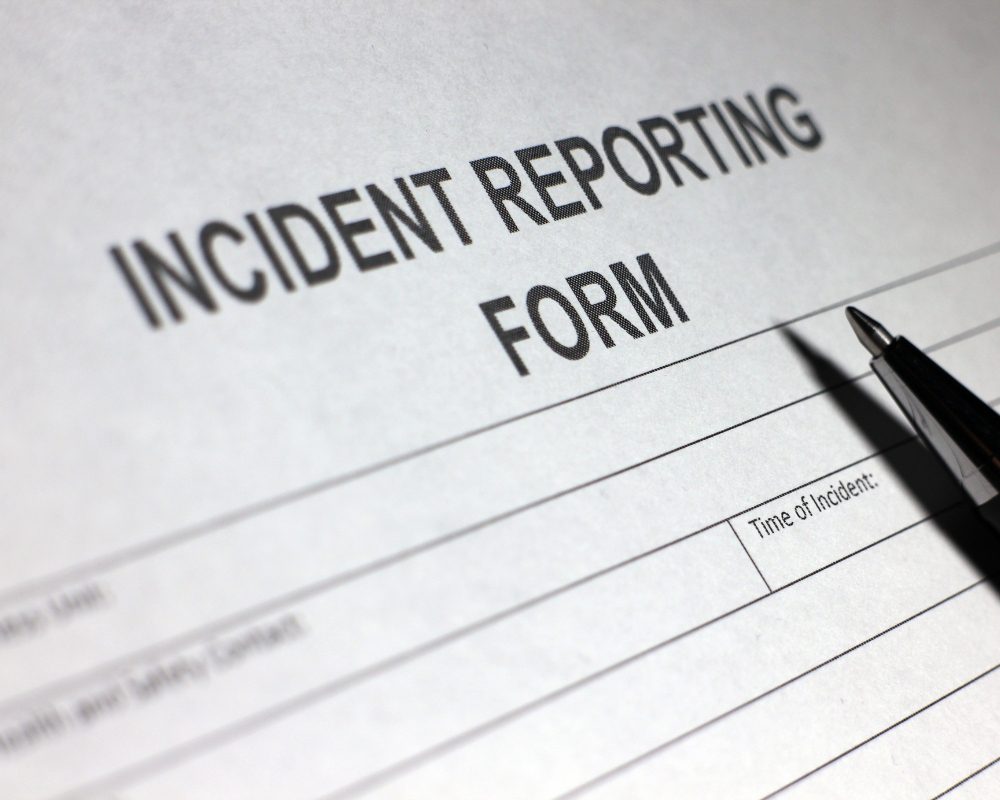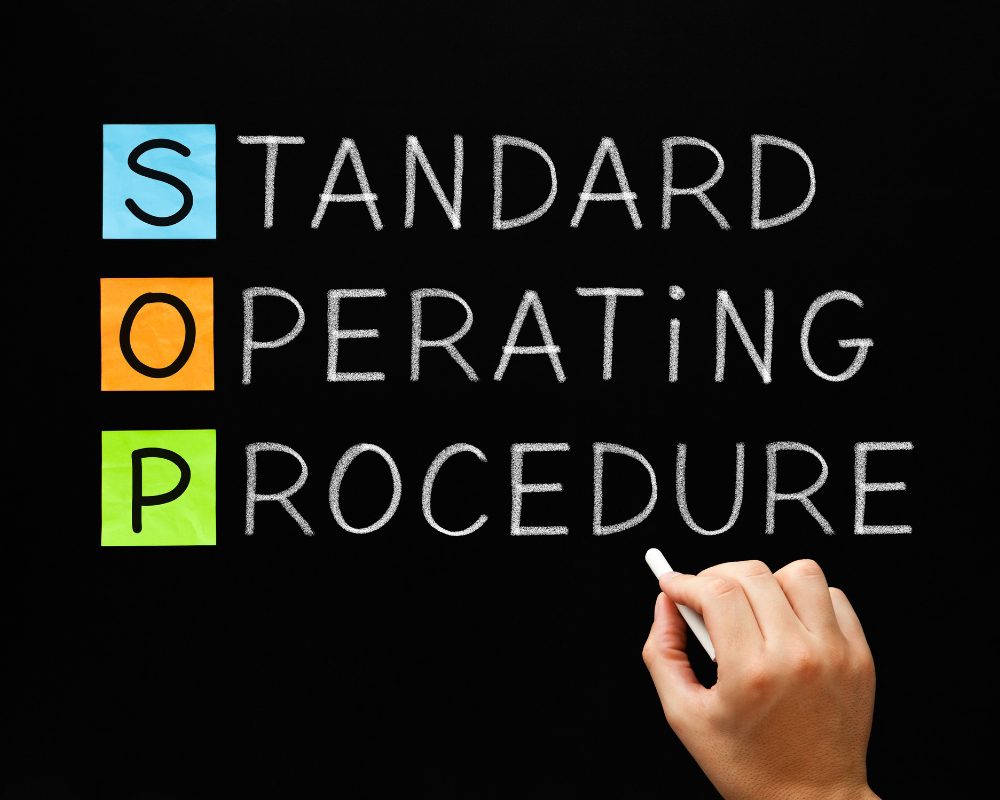Excel in Workplace Health & Safety in Australia with WHS Management Systems
The Work Health and Safety (WHS) Management System in Australia is an important framework for the protection of workers’ rights across all industries. It provides a comprehensive set of regulations to ensure that workplaces are safe and healthy environments while providing employers with guidance on managing their obligations under WHS law. This article will explore the components of the WHS management system in Australia, including its purpose, scope, structure and processes.
In order to comply with Australian legislation, businesses must have a robust safety system in place that not only meets legislative requirements but also contributes towards creating productive working conditions.
A well-developed WHS management system helps organisations identify areas where improvements can be made to reduce risks associated with workplace hazards.
Furthermore, it enables businesses to better understand their responsibilities when it comes to protecting workers from hazardous situations and ensuring effective communication between management and employees.
This article will provide readers with insight into what constitutes an effective WHS management system in Australia and discuss why this system is essential for business success in today’s competitive environment.
By exploring these topics, readers will gain knowledge about how they can develop an effective safety culture within their organisation or implement best practice methods for managing WHS regulations more efficiently.
Definition Of Whs
Workplace health and safety (WHS) is the application of strategies, policies, and processes to ensure compliance with laws while promoting a safe workplace environment.
It involves understanding potential hazards in the workplace and taking steps to prevent them from occurring or minimizing their impact if they do occur. WHS includes measures such as risk assessments, communication procedures, training programs, protective equipment, emergency response plans and more.
The purpose of WHS is to create an environment free from risks that could cause physical harm or death as well as psychological damage due to stressful work conditions. This requires employers to assess any potential risks associated with their operations and take appropriate action to reduce or eliminate them.
Additionally, it means providing employees with proper training on how to identify these risks and how best to protect themselves against them. It also entails implementing effective systems for communicating potential dangers so everyone can be aware of them.
Furthermore, education should be provided about occupational health issues, such as ergonomic principles, which help maintain employee well-being over time. Finally, regular monitoring should be conducted at all times to ensure that workplace safety standards are being upheld throughout the organization.
Overview Of Whs Regulations In Australia
In Australia, workplace safety is highly regulated. The primary governing body for WHS regulations is Safe Work Australia. Through this council, a variety of national standards are set to ensure safe practices in the workplace. These standards provide guidelines related to risk assessment, safety management systems and other essential procedures.
The following three components form the core of WHS regulations:
- Risk assessments – This process identifies potential hazards within the workplace and outlines measures to reduce or eliminate these risks.
- Safety management systems – A comprehensive system that enables compliance with health and safety laws while providing an effective framework to manage occupational health and safety risks appropriately.
- Australian Standards – Established by ASCC as minimum benchmarks for employers to adhere to when providing a safe working environment for employees.
Organisations must be aware of their obligations under WHS legislation and strive towards adhering to all relevant standards to effectively protect workers’ physical well-being and mental health from harm caused by hazardous environments or risky behaviour in the workplace. Doing so not only ensures legal compliance but also helps create a more productive work culture where staff feel valued and secure in their roles.
Benefits Of WHS Management Systems
The implementation of a WHS management system in Australia provides numerous benefits for organizations. Safety improvement is one very important benefit, as it allows businesses to meet their legal requirements and ensure the safety of all personnel.
This can be achieved through better communication between departments, with employees being made aware of any potential risks or hazards associated with their roles. Furthermore, implementing a WHS system can lead to cost savings by reducing operational costs related to workplace accidents (such as medical bills) and providing access to resources that are designed to improve performance and reduce risk.
Another advantage of utilizing a WHS management system is improved morale among staff members; when an organization takes proactive steps to ensure safety, it sends a positive message about its commitment to employee wellbeing.
This can have a positive effect on job satisfaction and engagement levels, leading to greater productivity from workers who feel valued and secure within their role. Additionally, enhanced safety measures create trust between managers and employees, helping foster strong relationships based on mutual respect.
In sum, the use of a WHS management system offers many advantages for Australian organizations, including:
- increased safety standards resulting in fewer accidents or injuries at work sites,
- cost savings through reduced operational expenses associated with incidents involving personnel,
- higher morale amongst staff due to improved safety protocols which demonstrate an organisation’s commitment to protecting its people,
- better communication throughout the business regarding potential health & safety risks
- and finally lessened risk overall due to improved procedures implemented via the WHS program.
Components Of A Good System
When it comes to the successful implementation of WHS management systems in Australia, there are many components that must work together. A good system should be designed with safety at its core, enabling organizations to manage risks, ensure compliance and track progress. The following table outlines some key elements of a sound WHS strategy.
| Element | Description |
|---|---|
| Safety Management Systems | These provide comprehensive coverage for identifying hazards and managing risk mitigation strategies. They include incident reporting protocols and data analysis tools to identify trends and areas for improvement. |
| Risk Management Strategies | These plans help an organization take proactive measures against potential workplace health and safety incidents or accidents by identifying hazardous conditions before they cause any harm. Risk assessments can also assist in developing preventative control measures such as safe work practices or engineering controls. |
| Compliance Tracking Software | This type of software allows businesses to monitor their compliance status on all applicable regulations related to WHS laws in Australia. It ensures the processes involved in meeting WHS requirements are tracked properly so that organizations remain compliant with current legislation. |
| Hazard Identification Processes | This involves using tools such as job hazard analyses (JHA) and other observation techniques to detect unsafe conditions, activities or behaviours that could lead to injury or illness if not addressed promptly. Once identified, these hazards can then be managed through appropriate corrective actions or preventive measures taken by the employer/manager. |
A well-designed WHS management system is essential for ensuring the safety of workers throughout Australia. Through proper hazard identification processes coupled with effective risk management strategies and compliance tracking software, businesses can create a safer working environment while simultaneously fulfilling their legal obligations under relevant legislation governing workplace health and safety standards.
By investing in these solutions now, companies will be better equipped to address any unforeseen circumstances that may arise in the future when it comes to meeting statutory requirements concerning employee welfare and protection from injury or illness while at work.
Implementing A System In Australia
Implementing a WHS management system in Australia requires an understanding of the national laws, regulations, and standards that govern this area. It is essential to be aware of any changes or updates to these rules and ensure compliance at all times.

It is recommended for businesses operating in multiple states or territories within Australia to have separate policies for each region, as there may be differences between them. In addition, guidance should also be sought from experts who are familiar with the local environment and requirements before implementing the system.
This will help to identify potential risks associated with the project and develop strategies to reduce or eliminate those risks. Furthermore, it is important to consider how best to communicate information about the new system to the staff so they can understand its purpose and use it effectively. Training should also be provided where necessary.
Finally, regular reviews of the system should take place in order to assess its effectiveness and make adjustments as needed.
Maintaining Compliance With Whs
Once implemented in Australia, a WHS management system must be maintained to ensure compliance with the relevant regulations. Maintaining compliance requires an ongoing assessment of hazards and risks in the workplace together with appropriate controls tailored to each situation.
This involves implementing necessary measures for health and safety, such as providing training, monitoring equipment, controlling access to hazardous areas and ensuring employees are aware of their responsibilities under WHS legislation. It is also important that any changes or new developments within a business are assessed for their potential impact on worker safety.
Risk assessment can help identify existing or potential hazards before they cause harm. Understanding the risk associated with particular activities, it enables organisations to make informed decisions about how best to manage them while considering both legal requirements and cost-effectiveness.
Risk assessments should include identifying sources of hazard, assessing the likelihood of occurrence and making recommendations on how to minimise or eliminate these hazards. The results should then be reviewed regularly to ensure that control measures remain effective over time.
Frequently Asked Questions
What Are The Penalties For Non-Compliance With Whs Regulations?
Non-compliance with Work Health and Safety (WHS) regulations can have serious legal, financial and operational consequences. In Australia, the penalties for non-compliance are determined by a variety of laws that exist at both the federal and state levels.
It is important to understand the potential ramifications of failing to comply with WHS regulations in order to mitigate any risks associated with operating a business. The most common penalties include the following:
- Financial fines: Depending on the severity of the infraction, businesses may be subject to large fines or other monetary sanctions such as compensation payments.
- Legal action: Non-compliant organizations may also face civil proceedings from employees, contractors or other parties who have been adversely affected by their actions.
- Disciplinary measures: Companies found guilty of negligence or misconduct under WHS legislation could face prosecution and/or internal disciplinary measures, including suspension or dismissal of staff members responsible for compliance failures.
An experienced WHS management system consultant can help your organization identify areas where you might be exposed to risk due to an inadequate understanding or implementation of regulatory requirements.
By taking proactive steps towards addressing these issues, you can protect your company’s bottom line while ensuring employee safety and well-being. Furthermore, having strong policies in place will give you peace of mind knowing that you are doing everything possible to avoid costly penalties associated with non-compliance.
Is Whs Training Required For All Employees?
The question of whether WHS training is required for all employees needs to be addressed. It is important to understand the laws and regulations regarding employee training obligations in order to ensure compliance with workplace safety requirements.
Numerous pieces of legislation govern WHS training requirements, depending on where the work takes place and what industry it relates to. Each state or territory in Australia has its own set of regulations that must be followed when providing WHS training to staff members.
Furthermore, employers may have additional obligations under their specific Enterprise Agreement or industrial award conditions that need to be considered when determining any employee’s individual training obligation. Generally speaking, these will involve ensuring employees are adequately trained on health and safety topics such as hazard identification and risk assessment, injury prevention techniques and emergency response procedures.
It’s clear from this discussion that obtaining appropriate WHS training for all employees is a critical responsibility for employers in Australia. Failing to comply with relevant WHS laws can result in significant penalties, so understanding one’s legal requirements is essential.
Employers should consult with their state/territory-specific regulatory body and an experienced consultant specialising in WHS management systems if they require further advice or guidance on how best to meet their employee WHS training obligations.
Are There Specific Whs Standards That Must Be Met In Australia?
Work Health and Safety (WHS) standards are a set of regulations that must be met in order to ensure the safety of workers. In Australia, these requirements have been put in place at both the federal and state level to protect employees from injury or illness while on the job.
The Australian government has implemented WHS compliance requirements for employers, which include taking all reasonable steps to provide a safe working environment and ensuring equipment is maintained regularly.
Employers also need to make sure their staff receive appropriate training relating to work health safety practices such as manual handling, using protective clothing and emergency evacuation procedures. Additionally, it is essential for business owners to monitor employee behaviour regularly and take action if any unsafe activities are observed.
Businesses should familiarise themselves with applicable WHS laws in their area to ensure they remain compliant with all relevant regulations. It’s important for companies to keep up-to-date records of any accidents or incidents occurring in the workplace so they can investigate them further and make necessary improvements.
Furthermore, organisations should conduct regular assessments of their current safety measures and review existing policies where necessary. By doing this, businesses can ensure they meet the required WHS standards in Australia and create a safe environment for everyone involved.
What Kind Of Support Is Available From The Government For Implementing A Whs System?
The implementation of a WHS system is an important step in the process of managing risks and ensuring safety for employees and customers. It can be difficult to understand all the regulations and requirements that need to be met.

Still, luckily there are government-led initiatives available to help organisations make sure they are compliant with WHS standards. This article will discuss what kind of support is available from the government for implementing a WHS system.
When it comes to complying with WHS regulations, Australia has some very specific standards that must be met by employers. The Australian Government provides guidance and resources on how best to comply with these standards through its Safe Work Australia website. This includes information about employer obligations under workplace health and safety laws and access to free online tools such as hazard identification checklists and risk assessment templates.
Businesses may also seek professional advice regarding their compliance needs from an accredited consulting service or industry association.
Government funding schemes are also available that provide financial assistance towards projects designed to improve workplace safety across Australia.
These grants are open to both public and private sector organisations looking to implement new systems or upgrade existing ones in line with current legislation. Furthermore, any organisation found not meeting their legal duties could face penalties ranging from fines up to five years imprisonment, depending on the severity of the offence committed. Therefore, it is essential that employers ensure they have taken adequate steps towards achieving full compliance prior to starting operations or continuing business activities within Australia’s borders.
In order for companies operating in Australia to remain legally compliant, it is necessary that appropriate measures are put into place when introducing a WHS system – this includes seeking out professional assistance if required – as well as having an understanding of relevant state/territory laws governing occupational health and safety practices in the workplace at all times.
With the right amount of planning and preparation, businesses should find no difficulty successfully navigating their way through these issues while still providing safe working conditions for staff members throughout every stage of their operations.
What Are The Common Challenges In Maintaining Whs Compliance?
Maintaining compliance with WHS regulations is a major challenge faced by businesses around the world. In order to comply with standards and ensure health and safety in the workplace, organisations must be aware of their obligations under the law and have suitable systems in place.
This can involve managing risk assessments, implementing appropriate control measures, providing adequate resources for training staff on safe work practices, keeping up-to-date records, and ensuring all employees are adequately informed about their rights and responsibilities.
The challenges faced when maintaining WHS compliance vary depending on an organisation’s size and industry sector. For example, larger companies may need to deal with more complex legal issues, such as dealing with multiple regulatory authorities or meeting different requirements from each jurisdiction. Smaller organisations may struggle due to a lack of knowledge or resources required to stay compliant.
Additionally, many governments provide support and incentives for businesses looking to implement a WHS system. Still, these initiatives often require substantial investment, which smaller firms may not be able to afford.
Businesses should consider carefully how best to manage their compliance needs while taking into account both financial constraints and government assistance available. A well-designed WHS management system will help ensure that risks are identified early on so they can be effectively managed before becoming problems that could result in injury or, worse still, litigation if they go unaddressed.
By having an effective strategy tailored specifically to their particular circumstances, organisations can benefit from improved safety outcomes while avoiding costly penalties associated with non-compliance.
Conclusion
WHS management systems are an important part of business operations in Australia. Ensuring that all staff comply with the relevant regulations and standards is essential for protecting employee health, safety and wellbeing. Non-compliance can result in significant penalties, including fines or even imprisonment for company directors responsible for failing to provide a safe working environment.
It is necessary to ensure that all employees receive the appropriate WHS training so they understand their responsibilities under Australian legislation. The government provides support through various initiatives, such as financial assistance and guidance on how to implement workplace safety systems effectively. It is also important to stay informed about any changes made to the laws which may affect compliance requirements.
Despite these resources, businesses often face challenges when it comes to maintaining WHS compliance due to factors such as a lack of knowledge or limited budgets.
However, numerous tools are designed to help companies identify potential risks and create tailored solutions that meet legal obligations while keeping workers safe from harm. With careful planning, businesses can successfully adhere to WHS regulations and create a safe work environment for everyone involved.







